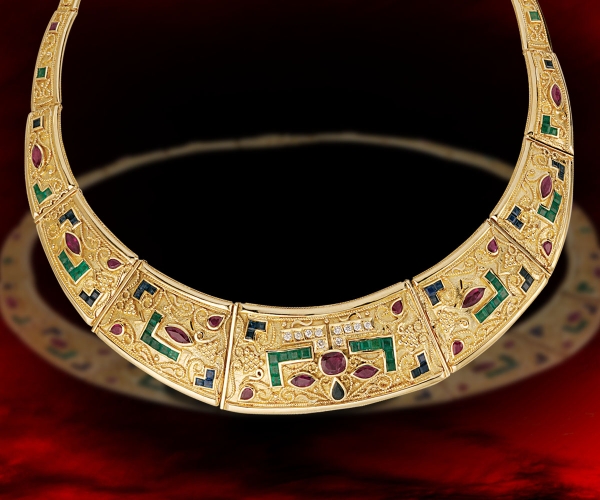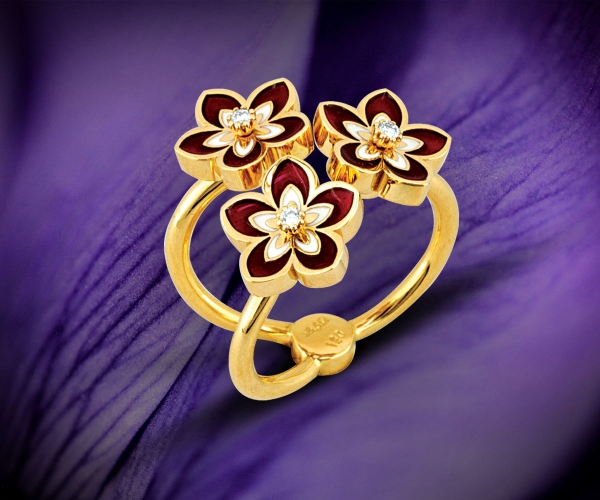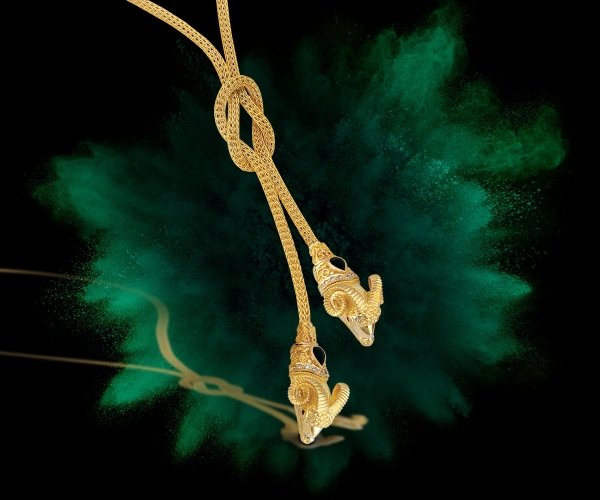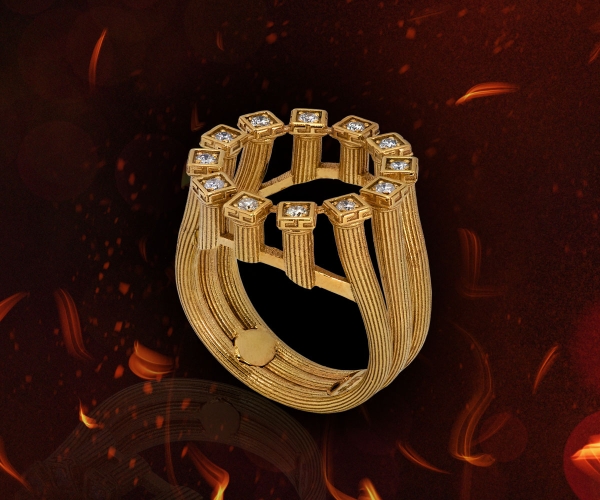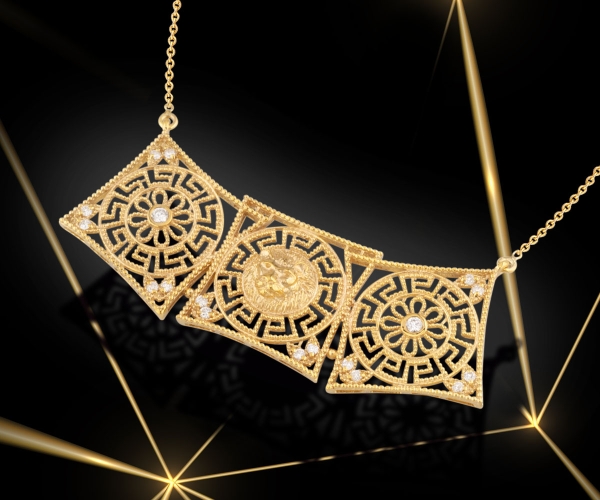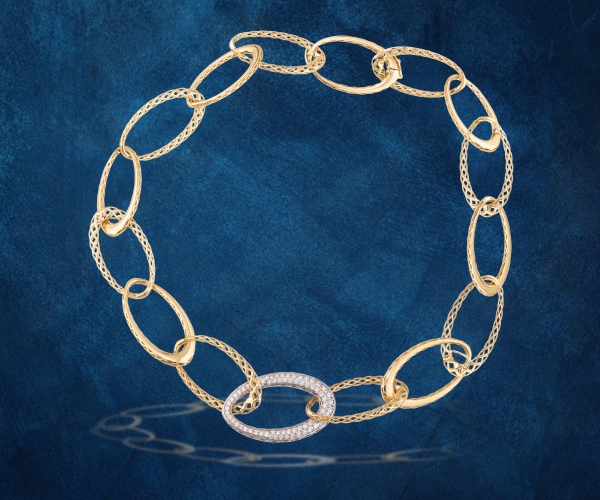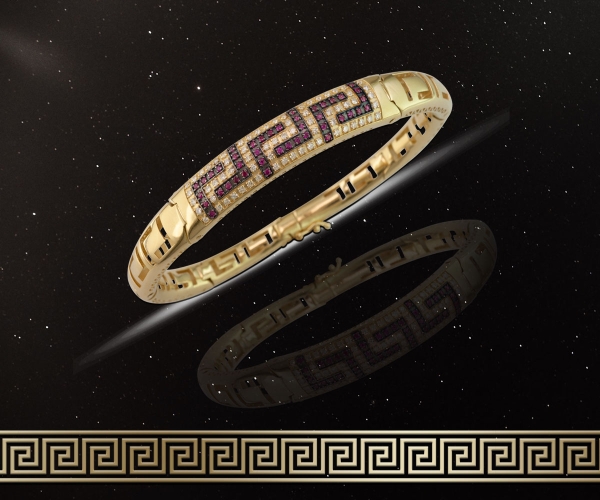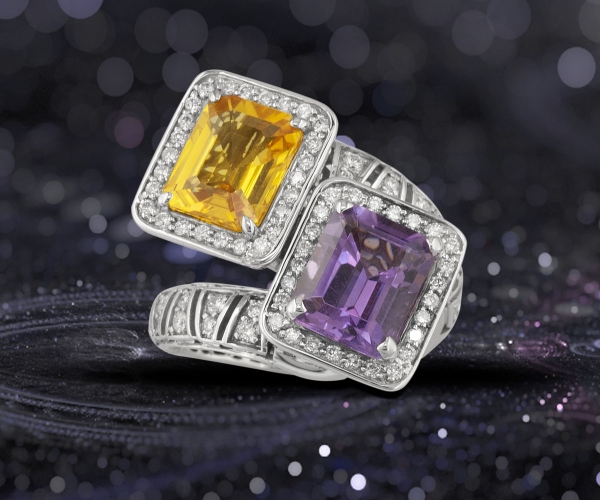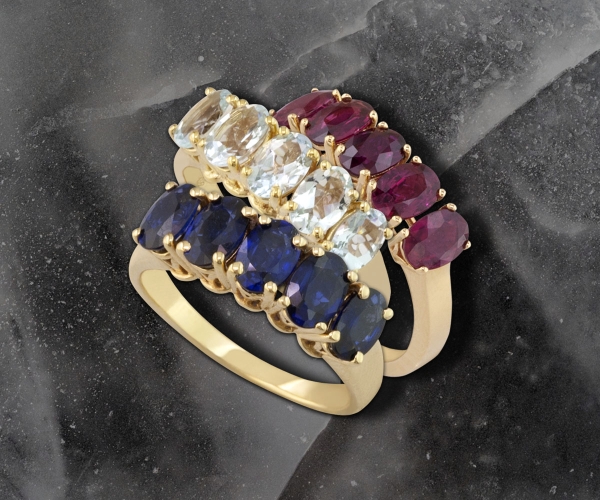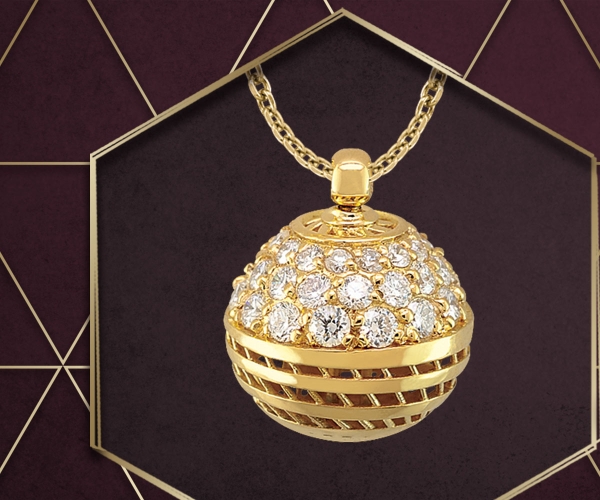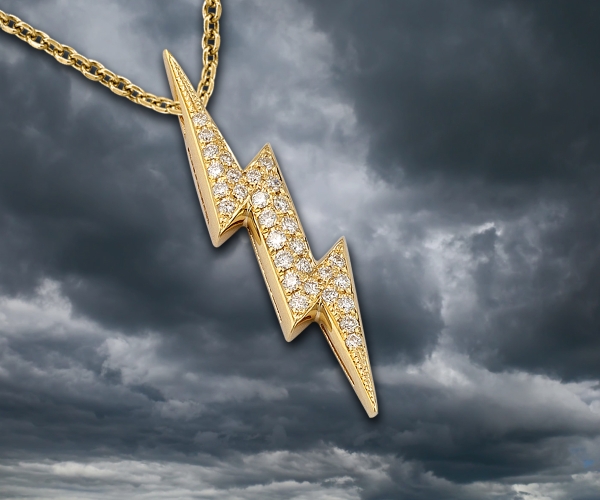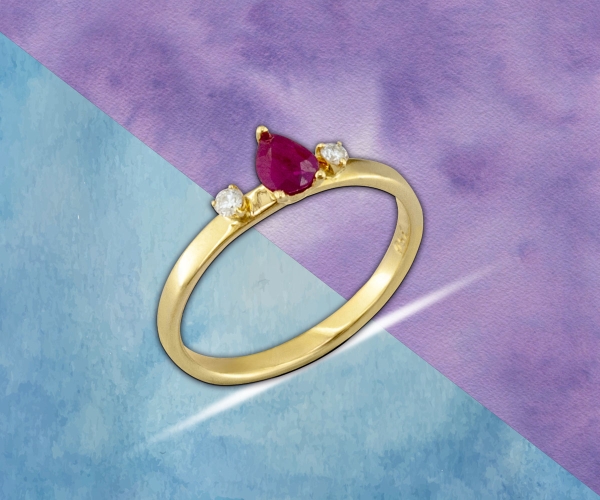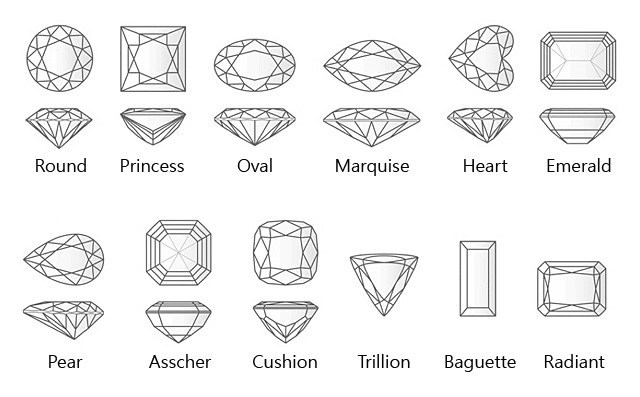
In nature, the shape of a gemstone is determined by its natural crystal structure and the conditions under which the crystal developed. To enhance the natural beauty of the crystal and to provide a safe shape for mounting, gem cutters form natural gemstones into precise shapes. These shapes typically include a number of flat, symmetrical planes, called facets, which reflect light to add sparkle and brilliance to the finished stone.
Gemstone cutting is based in science. Each gem material has a known refractive index which allows a gem cutter to determine how light rays will bend as they pass through the stone. Using this information, a gemstone can then be precisely shaped to best enhance its natural beauty.
Despite the dominance of rounds, fancy gem cuts still hold their own. Customers looking for something unique, symbolic, or vintage can turn to these different cuts. For faceted gems, a fancy cut is any cut other than a round. This category includes ovals, pears, hearts, and other cuts, too. Fancy cab shaped gems are anything other than a round or oval. They include rectangles, squares, crosses, tear drops, and free form shapes.
Here is a breakdown of the most commonly seen gem cuts.

ROUND
Alternatively known as “Round Brilliant”, “American Ideal” or “American Standard”. With 57 facets, this cut is the most efficient in capturing a stone’s brilliance and sparkle. Although there is no single inventor officially responsible for the round cut invention, many sources name Vincenzio Perruzzi, a Venetian cutter from the 18th century.
Originally developed exclusively for diamonds, the Round Brilliant cut is now widely used for gemstones as well.

PRINCESS
Square in shape, this cut is the second most popular cut, right behind the Round Brilliant cut. Actually, it is technically known as “Square modified brilliant”, since it is basically a square version of the Round Brilliant cut. It boasts between 58 and 76 facets that bounce light off its surface beautifully, making it a shape with the most sparkle. Its positive attributes are best brought out by light, transparent gemstones. It is a fairly recent cut, having been created in the 1979 by Ygal Perlman, Betzalel Ambar and Israel Itzkowitz of Israel.
A princess cut gem with the same width in the diameter as a round cut gem will actually have a higher carat weight, because the round cut gem would have had its four corners cut off to make it round. The square cut gem retains 80% of the rough gemstone, while the round cut gem retains only 50%, making it an excellent value for customers and gem cutters alike.

OVAL
The Oval cut was created by Lazare Kaplan in the late 1950’s – early 1960’s. It presents with an elliptical shape when viewed from the top, and can be described as a hybrid between round and marquise shapes. Crafted with 69 facets, it is a type of a modified brilliant cut, which offers its wearer the brilliance and fire of a round cut gemstone, in a more unique shape. Its elongated silhouette is an added advantage, because it creates the illusion of a larger gemstone, and allows a finger to look longer and slimmer when wearing it.
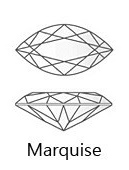
MARQUISE
This football shaped cut is also known as Navette Cut, and is crafted with 57 facets. It is a type of a modified brilliant cut, meaning it was cut to reflect the most light and offer maximum sparkle and color. It’s important to note that if a gem is cut too shallow, the light will pass through the back of the gem thereby reducing its color and sparkle. Striving for perfect symmetry is another important factor in crafting Marquise cut gemstones. The two end points must line up with each other precisely and the two halves of the stone should be perfect copies of each other. This will ensure that the stone sits properly in its setting, minimizing future chipping or breakage.
The Marquise cut diamond was commissioned by King Louis XIV of France to present to his love, Marquise de Pompadour. With its long lines and elongated silhouette, it was supposed to resemble her perfectly shaped smile. Furthermore, its elongated shape flatters the finger, making it appear longer and slimmer. In recent years, the Marquise cut has even been set vertically. Either way, due to its substantial surface area, this cut offers more weight per carat than any other cut and creates the illusion of a larger gemstone

HEART
The heart shaped cut is in essence a pear shaped cut with a cleft at the top. With 59 standard facets, this cut can be very fiery and offer superb sparkle. Symmetry plays a vital role in selecting a good Heart Shaped cut gemstone. The two halves must be perfectly equal, and the cleft should be sharp and distinct and the sides should be slightly rounded. Rarely used as engagement rings, Heart Shaped gemstones remain a popular choice for earrings, pendants, and gemstone solitaire rings.

EMERALD
The Emerald Cut is shaped like a rectangle from the top, with trimmed corners. With approximately 50 facets, this particular cut presents with fewer facets than Round or Square cuts. The emphasis here is not so much on the sparkle, but on the gem’s clarity and color. Color tends to show very vividly in Emerald cut gemstones. In lighter colored gemstones, this cut can be quite dazzling with broader and more striking flashes of light, with the light bouncing between the light and dark surfaces of the gem, as if looking into a hall of mirrors.
This cut was originally designed for cutting emeralds. Since emeralds occur in nature with numerous inclusions, cutting them is especially difficult due to potential chipping. The Emerald cut addressed those issues by decreasing the amount of force applied during cutting and protecting the stone from breakage. Eventually, this cut was used for diamonds and other gemstones as well. Customers were particularly drawn to this unique and stylish newer style, as its elongated shape looks particularly flattering on a finger.

PEAR
Fashioned in a shape of a gleaming teardrop, a Pear cut gemstone can be described as a hybrid between an Oval cut and a Marquise cut with a tapered point on one end. It is a type of a modified Round Brilliant cut and therefore offers 71 facets which reflect light beautifully and allow color to showcase dramatically. The first Pear cut diamond was crafted by a Flemish polisher Louis van Berquem of Belgium in 1458.
When crafting a Pear cut gemstone, it is important to aim for perfect symmetry. The point should align with the peak of the rounded end. Pear cut gemstones require a special 6 prong setting, with a prong to maintain support for its fragile point. Most women wear the pointed end of the Pear cut gemstone in the direction of the fingernail, although that largely depends on the wearer’s choice. The elongated silhouette of a Pear cut ring lengthens and slims its wearer’s finger, making it an attractive choice not only for earrings and pendants, but for rings as well.
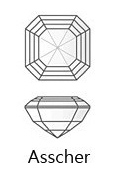
ASSCHER
Alternatively called “Square Emerald cut”, it is a hybrid of a princess and an emerald cut. It presents with a distinct X in the gemstone’s table and features cropped corners along its four sides. Rather than creating a brilliant faceted pattern, which would bring out the gem’s fire, the “step-cut” facets in this cut maximize the gem’s clarity. This cut was developed by the Asscher brothers in 1902 of Holland and remained popular through the 1920’s.
In 2001, the Asscher cut underwent some modifications by Edward and Joop Asscher, resulting in the Modern Asscher or Royal Asscher cut. The newer version increased the number of facets from 58 to 74, and introduced wider corners.
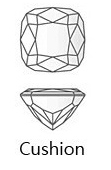
CUSHION
Once referred to as “Old Mine Cut” or “Old European Cut”, this cut presents with approximately 64 facets and offers a basic square shape with gently rounded corners, making it look like a couch cushion. It may also be referred as a “Pillow Cut”. Just like a Princess cut, this cut maximizes utilizing the raw gem in the best way possible to avoid waste while simultaneously maintaining fabulous gem luster and brilliance. This traditional cut has been around for 200 years, and has been the industry standard before the start of 20th century. Some cushion cuts may appear slightly oval in their shape.
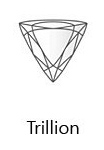
TRILLION
The Trillion, also known as “Trilliant” or “Trielle” is a modern cut introduced by the Asscher brothers in Amsterdam and was later trademarked by the Henry Meyer Diamond Company of New York in 1962. The trillion cut is practically a cut in a triangle shape which means that it possesses three sides. These cuts have a total of 31 facets and display a very sharp brilliance if the stone is cut to the correct depth allowing good scintillation. There are two different variations of these cuts. The curved cut used for single, center stones, and the un-curved cut used for side stones. It is believed that the ideal ratio of length to width in a trillion cut stone should be the same length as the stone is wide. (1:1 aspect ratio)
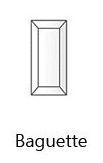
BAGUETTE
Long and rectangular in shape, baguette cut gemstones are a popular choice for accent stones in jewellery. The term Baguette originated from the Italian word “bacchetta”, meaning little stick; bacchio, meaning rod, or from the French word baguette, which is an oblong loaf a bread. The cut was created in the 1920-1930’s during the Art Deco and Art Nouveau movements. Because of its clean lines and a modern, geometric look, which deviated sharply from the traditional Round cut, it became instantly popular.
Crafted in a “step cut” fashion, its 14 facets have been cut in steps along the edges, resembling a pyramid without its top. Although not as fiery and brilliant as a round cut, these stones are cut to maximize clarity. Since crafting Baguettes requires fewer cuts than other gemstone shapes, it is extremely important to cut them properly, since there are much fewer facets to hide any imperfections. Baguette cut stones can be regular or “tapered”, meaning two sides are tapered inward, resembling a trapezoid. The tapered variation works particularly well as side stones to a round centerpiece.
Baguette cut stones usually run small in size, often less than one carat. Therefore, they are measured according to their dimensions, and not by carat weight. Their unique shape allows Baguette stones to be set side by side without gaps, unlike round stones, making them indispensable in today’s jewellery industry.
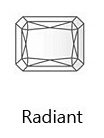
RADIANT
Designed by Henry Grossbard in 1977 with the goal of combining the best elements of the emerald cut and the round brilliant cut. The radiant shaped stone combines the brilliance of a round brilliant and the sophisticated long and elegant lines of an emerald. This shape has 70 facets that give it its fire and brilliance and the cut corners and rectangular/square shape of an emerald / Asscher.
Even though it has not been in the jewelers’ community for many years, this cut has managed to gain increasing popularity in a short amount of time. Radiant cuts are one of the top ten most common diamond cuts and are often used for engagement and wedding rings.



